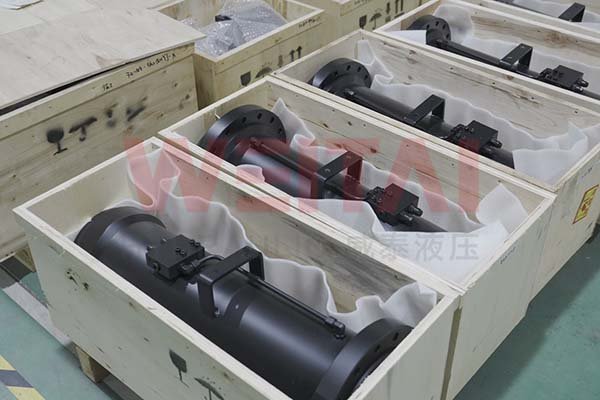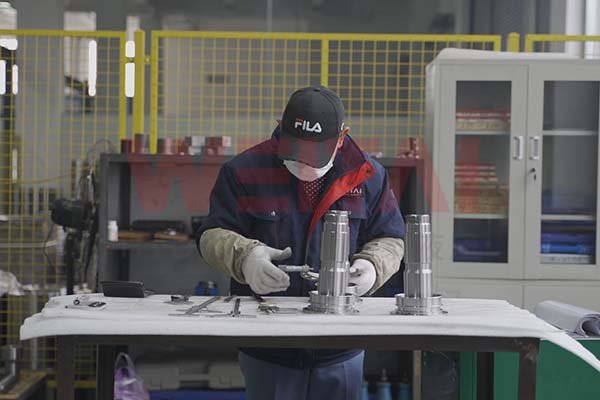How Do You Size a Hydraulic Rotary Actuator?
Introduction
Hydraulic rotary actuators play a crucial role in various industrial applications. But how exactly do you size them? This article will walk you through the process.
A hydraulic rotary actuator is a device that converts hydraulic power into rotational motion. Hydraulic refers to systems that use pressurized fluid, usually oil, to transmit force. Rotary indicates that the actuator produces rotational or circular movement.
These actuators are widely used in manufacturing, construction, and aerospace industries. They are essential for tasks requiring precise rotational movement control, such as operating valves, positioning machinery, and driving conveyor belts.
Understanding how to size a hydraulic rotary actuator is important to ensure optimal performance and reliability in industrial applications. The sizing process involves considering various factors such as the required torque, speed, and duty cycle of the actuator.
Understanding Hydraulic Rotary Actuators
Hydraulic rotary actuators are specialized devices that convert hydraulic power into rotational motion or torque. They are essential in machinery where precise and powerful rotational movement is required.
These actuators are similar to other types of actuators but are specifically designed for rotational tasks. For example, while linear actuators produce straight-line movement, hydraulic rotary actuators are focused on circular or rotational movement.
The term 'hydraulic' indicates that these actuators operate using pressurized fluid, usually oil. This hydraulic power is harnessed to drive the rotational movement. 'Rotary' emphasizes the nature of the movement produced by these devices.
Hydraulic rotary actuators find extensive use in various industries. In manufacturing, they can be used to position machinery parts with precision. In construction, they might be employed in equipment like cranes to control the movement of booms. In the aerospace industry, they play a crucial role in the operation of certain mechanisms that require accurate rotational control.
Understanding the nature and function of hydraulic rotary actuators is fundamental to sizing them correctly for specific applications.
Factors to Consider When Sizing
1. Performance requirements
The intended use of the actuator will determine its required performance characteristics. Consider factors such as torque, speed, and accuracy. Torque is a crucial performance parameter for hydraulic rotary actuators. For applications that require heavy-duty rotational movement, a high torque output is essential. Hydraulic torque, as in the case of a hydraulic torque converter, provides the necessary power to drive the actuator. Speed is another important factor. Depending on the task at hand, different speeds may be required. Some applications may need slow and precise rotational movement, while others may demand high-speed rotation. Accuracy is also vital, especially in applications where precise positioning is required. For example, in manufacturing processes where machinery parts need to be positioned with high accuracy, the hydraulic rotary actuator must be able to provide consistent and accurate rotational movement.
2. Environmental conditions
The operating environment can have a significant impact on the sizing of a hydraulic rotary actuator. Factors such as temperature, humidity, and exposure to contaminants need to be taken into account. High temperatures can affect the performance of the hydraulic fluid and the components of the actuator. In extreme heat, the hydraulic fluid may thin out, reducing its viscosity and potentially leading to decreased efficiency and increased wear. On the other hand, low temperatures can cause the fluid to thicken, making it more difficult for the actuator to operate smoothly. Humidity can also be a concern, as it can lead to corrosion and rusting of the metal parts. Exposure to contaminants such as dust, dirt, and chemicals can damage the seals and other components of the actuator, reducing its lifespan and reliability. Therefore, when sizing a hydraulic rotary actuator, it is important to consider the environmental conditions in which it will operate and select an actuator that is suitable for those conditions.
3. Compatibility with the hydraulic system
The actuator must be compatible with the existing hydraulic system. Consider factors such as pressure ratings, flow rates, and fluid compatibility. The pressure rating of the actuator should match or exceed the pressure generated by the hydraulic system. If the actuator is not rated for the correct pressure, it may fail or operate inefficiently. Flow rates are also important. The actuator needs to be able to handle the flow of hydraulic fluid provided by the system. If the flow rate is too high or too low, it can affect the performance of the actuator. Fluid compatibility is another crucial factor. The hydraulic fluid used in the system must be compatible with the materials used in the actuator. Some fluids may cause damage to seals, hoses, and other components, leading to leaks and reduced performance. Therefore, it is essential to ensure that the hydraulic rotary actuator is compatible with the hydraulic system in terms of pressure ratings, flow rates, and fluid compatibility.
Steps in Sizing
1. Determine the required torque and speed
To size a hydraulic rotary actuator, the first step is to determine the required torque and speed based on the application requirements. As per the resources, "required torque" refers to the necessary amount of rotational force needed for the actuator to perform its intended task. For example, in applications that require heavy-duty rotational movement, a high torque output is essential. This can be calculated by considering factors such as the load to be moved, the resistance encountered, and the speed at which the movement needs to occur.
Speed is another crucial factor. Different applications may demand various speeds. Some might need slow and precise rotational movement, while others may require high-speed rotation. The required speed can be determined by analyzing the workflow and the time constraints of the specific task.
2. Select the appropriate actuator type
There are different types of hydraulic rotary actuators available, such as single-turn and multi-turn actuators. Selecting the right type depends on the specific needs of the application. Single-turn actuators are suitable for tasks that require a limited range of rotation, such as operating valves. On the other hand, multi-turn actuators are ideal for applications that need a larger range of rotation, such as positioning machinery or driving conveyor belts.
For example, in manufacturing processes where precise positioning of machinery parts is required, a single-turn actuator might be sufficient if the rotation required is within a limited angle. However, in construction equipment like cranes that need to control the movement of booms over a wider range, a multi-turn actuator would be a better choice.
3. Check for compatibility with the hydraulic system
Ensuring that the selected actuator is compatible with the hydraulic system is crucial for optimal performance. This involves checking the pressure, flow rate, and fluid requirements of the hydraulic system.
The pressure rating of the actuator should match or exceed the pressure generated by the hydraulic system. If the actuator is not rated for the correct pressure, it may fail or operate inefficiently. For instance, hydraulic torque, as in the case of a hydraulic torque converter, provides the necessary power to drive the actuator. The actuator must be able to handle this torque without exceeding its pressure rating.
Flow rates are also important. The actuator needs to be able to handle the flow of hydraulic fluid provided by the system. If the flow rate is too high or too low, it can affect the performance of the actuator. For example, if the flow rate is too high, it may cause excessive wear and tear on the actuator, while a low flow rate may result in insufficient power and slow operation.
Fluid compatibility is another crucial factor. The hydraulic fluid used in the system must be compatible with the materials used in the actuator. Some fluids may cause damage to seals, hoses, and other components, leading to leaks and reduced performance. For example, hydraulic rotary actuators, like those in hydraulic rotary drilling rigs or hydraulic rotary impact drilling tools, need to be compatible with the specific hydraulic fluid used in the drilling process to ensure reliable operation.
Conclusion
Sizing a hydraulic rotary actuator requires careful consideration of various factors. By following the steps outlined in this article, you can ensure that you select the right actuator for your application.
To sum up, understanding the nature and function of hydraulic rotary actuators is the first step in sizing them correctly. Considering factors such as performance requirements, environmental conditions, and compatibility with the hydraulic system is crucial. Following the steps of determining the required torque and speed, selecting the appropriate actuator type, and checking for compatibility with the hydraulic system can lead to optimal performance and reliability.
Whether it's in manufacturing, construction, or aerospace, getting the sizing right for hydraulic rotary actuators is essential for efficient and precise operation. By taking the time to assess all the relevant factors and follow the proper sizing process, you can ensure that your hydraulic rotary actuator meets the demands of your specific application.

